Comares Palace – architecture, key areas like Court of the Myrtles
Explore the Grandeur and History of the Comares Palace
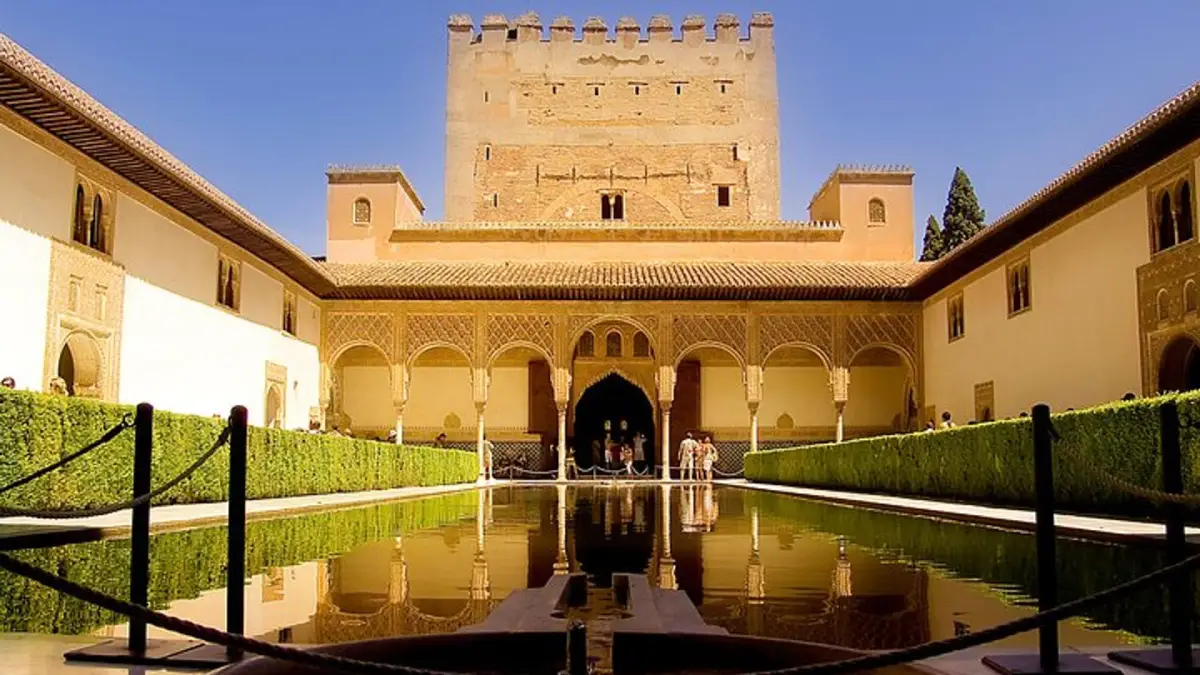
The Comares Palace is a stunning example of Nasrid architecture located in the heart of the Alhambra in Granada.
The palace is part of the larger Alhambra Castle, which includes other remarkable structures like the Comares Tower and the Hall of the Ambassadors.
Though modified over the centuries, its beautiful courtyards, elegant halls, and stunning decorative details continue to capture the essence of Islamic Spain.
In this article, we’ll delve into the history, architectural brilliance, and cultural significance of the Comares Palace.
The Alhambra Castle attracts over 2.6 million visitors annually, so booking in advance is a smart choice. The skip-the-line ticket is the most popular and budget-friendly option. For a deeper understanding of the palace, the guided tour offers expert insights, while the night tour provides a magical experience in a peaceful atmosphere.
History of Comares Palace
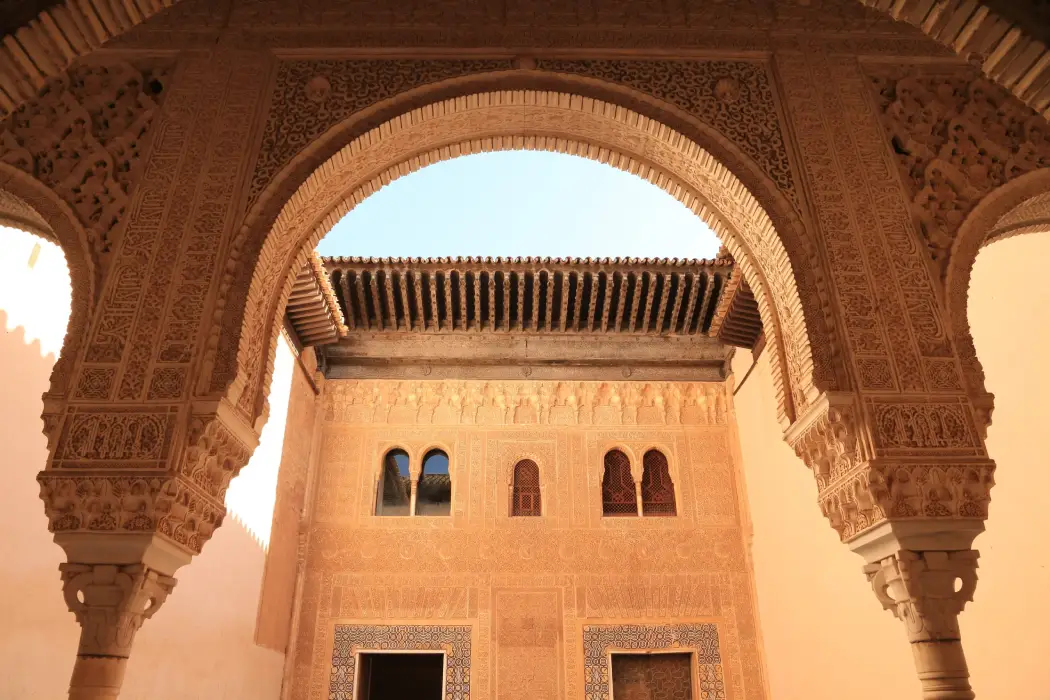
The Comares Palace was built in the 14th century as the official residence of the Nasrid Sultans of Granada. It was first constructed by Isma’il I, who designed it as the royal palace complex, including the Comares Baths and the Mexuar Hall.
Yusuf I later expanded it by adding the grand Comares Tower and the Hall of the Ambassadors, where royal meetings and official receptions took place.
His son, Muhammad V, completed the palace’s decoration and structure, including the Court of the Myrtles and the beautiful stucco and tilework seen today.
After the Christian conquest of Granada in 1492, the palace was used by Spanish monarchs and modified to connect it with the nearby Palace of the Lions. In the 16th century, some parts were demolished to build the Palace of Charles V.
In the 19th century, restorer Rafael Contreras made several changes to the palace, some of which were later considered inaccurate.
A major fire in 1890 destroyed the original ceiling of the Sala de la Barca, which was later reconstructed in 1965 using recovered fragments.
Places Inside Comares Palace
The Comares Palace is home to several remarkable spaces, each showcasing the grandeur of Nasrid architecture and rich history. Let’s explore the key highlights inside the palace, from the tranquil Court of the Myrtles to the majestic Hall of the Ambassadors and the impressive Comares Tower.
Court of the Myrtles (Patio de los Arrayanes)
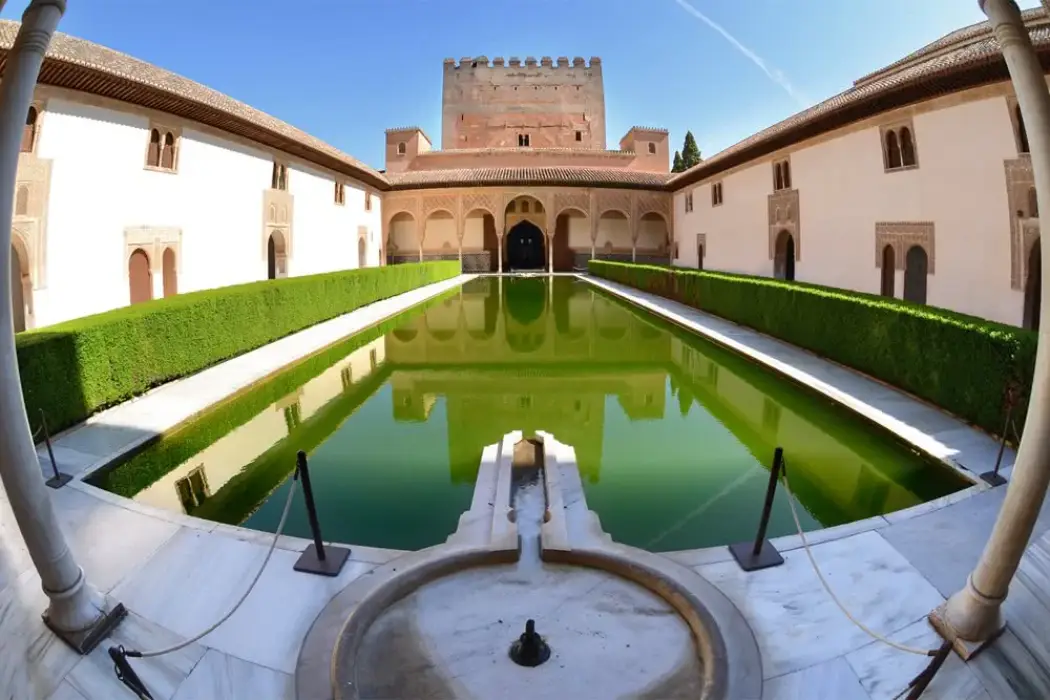
The Court of the Myrtles gets its name from the myrtle bushes around the central pond. The pond is 34 meters long and 7.1 meters wide, and it has two fountains that are filled with water.
The patio is surrounded by covered walkways supported by columns with decorative arches and inscriptions praising God.
The southern gallery had kitchens and shelves with Moorish decoration. Some chambers were removed when Charles V’s palace was built. A six-arched gallery with wooden decorations was added later.
The women’s residence was in the side sections, and some of the decoration was redone in the 19th century.
The northern gallery has two small towers and an inscription honoring Muhammad V after his victory in 1368.
Comares Baths (Baños de Comares)
The Comares Baths were built east of the Comares Palace in Roman bath style. The Hall of the Beds (Sala de las Camas) was the first room acting as an Apodyterium, where people undressed before bathing.
The bath includes a cold chamber (frigidarium), a warm chamber (tepidarium), and a steam room (caldarium) with a copper boiler to heat water, which was sent to the chambers through underground pipes. The layout of the bath is similar to other Arab baths.
Hall of the Ambassadors (Salón de los Embajadores)
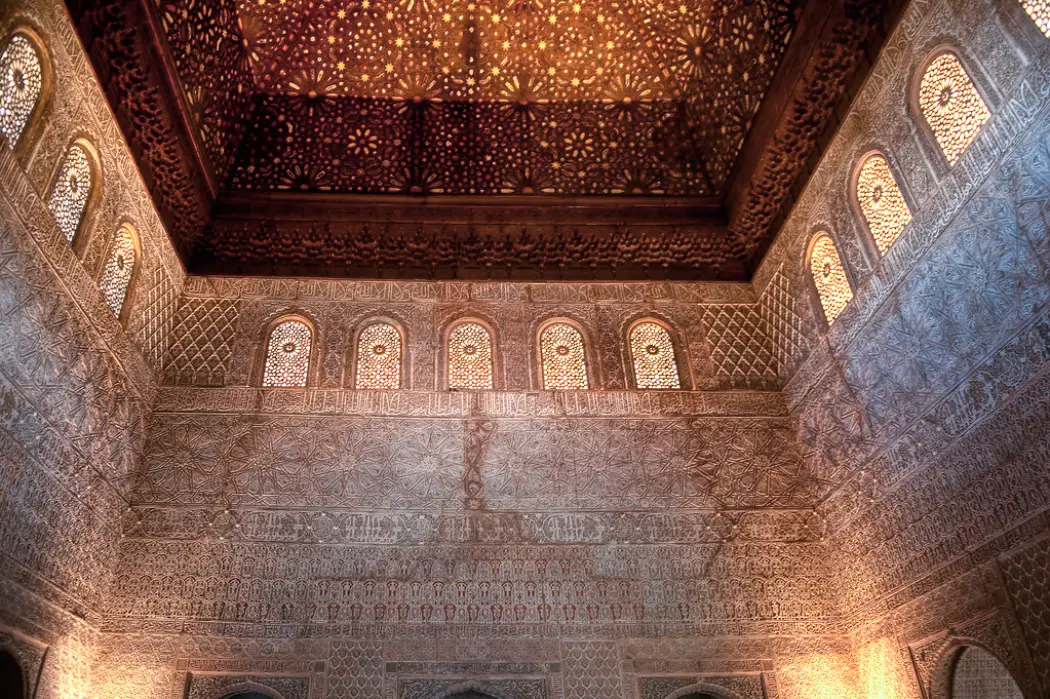
The Hall of the Ambassadors is the most majestic room in the Comares Palace, used for official receptions and where the throne was located. It is 11.30 x 11.30 meters in size and 18.20 meters high.
Its floor was once made out of marble, although it is now made of clay floor tiles, with the Alamares coat of arms in 16th-century glazed ceramic tiles.
The walls are 2.5 meters wide, with three arches leading to small rooms and twin balconies. The room is covered with inscriptions that praise God and the emir.
The wooden ceiling is a beautiful design with cedar wood and patterns. It represents the Seven Heavens in Islamic belief, with God’s throne in the center.
Hall of Boat
The Hall of the Boat (Sala de la Barca) is entered through a mocarabes arch from the Court of the Myrtles. Its name comes from the Arabic word “baraka” (blessing), which later became “barca” (boat) in Spanish.
The hall is a long rectangular room, extended by Mohammed V, and measures about 24 meters long and 4.35 meters wide.
A fire in 1890 destroyed its original vault, which was later rebuilt in 1964. The walls are decorated with Nasrid plasterwork, featuring the dynasty’s coat of arms, the word “Blessing,” and the motto “Only God is Victor.”
Around the hall are bedchambers with tile-covered skirting and columns supporting ornate mocarabes arches.
Comares Tower (Torre de Comares)
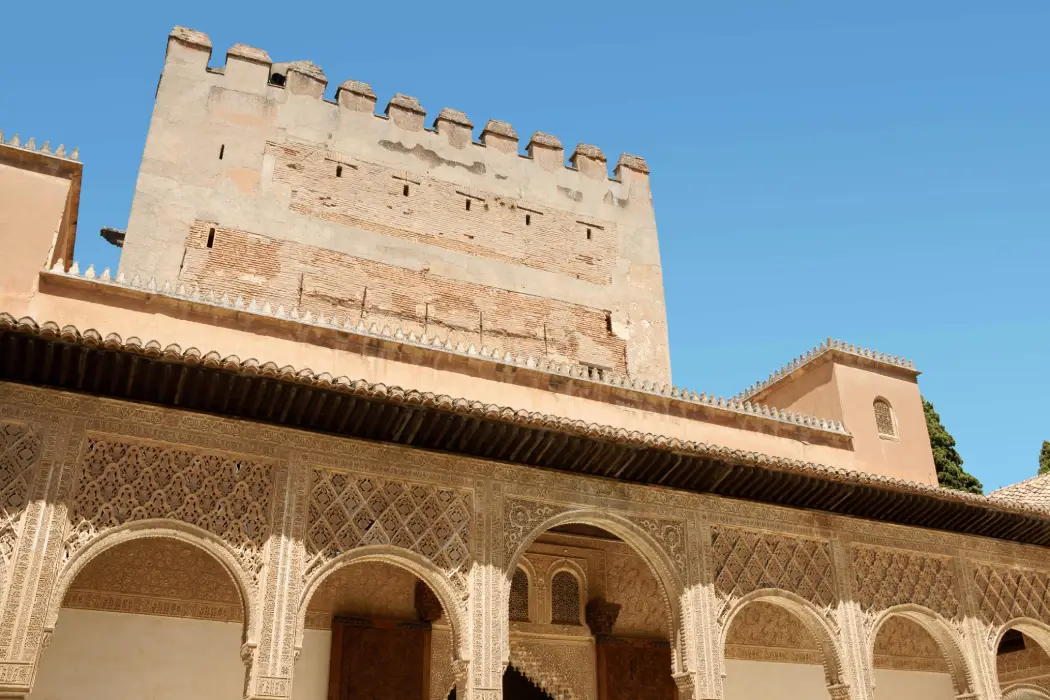
The Comares Tower is the tallest tower in Alhambra, standing at 45 meters. It is named after the stained glass windows (called comarías) that light up the Hall of the Boat.
The tower has two doors: one leads to the Sultan’s winter bedchamber and a spacious balcony, while the other leads to a small oratory with a horseshoe arch.
The tower has decorative water spouts, and defensive sections were added in the 16th century. The Hall of the Ambassadors is located inside the tower. It is said that the Council of Granada’s surrender to the Catholic Monarchs occurred here.
Additionally, the tower is believed to be where Christopher Columbus convinced the Catholic Monarchs to fund his journey to the West Indies, which led to the discovery of America on October 12, 1492.
Architecture of Comares Palace
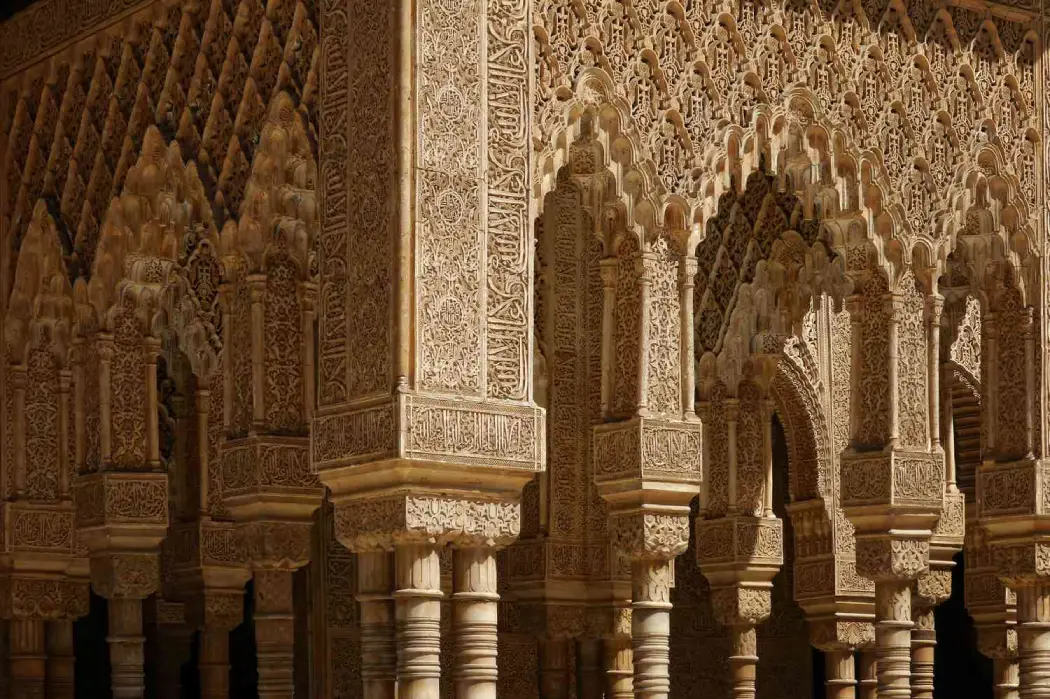
The architecture and design of the Comares Palace are prime examples of Nasrid style, blending Islamic and Moorish influences with elements of Spanish architecture.
The palace is richly decorated with ceramic tiles, stucco work, and Quranic inscriptions.
Water is a central element, symbolizing purity and life, with fountains and reflecting pools enhancing the tranquil atmosphere.
The design also makes use of natural light coming through the arches, casting intricate patterns, creating a serene, elegant environment that reflects both aesthetic beauty and symbolic meaning.
